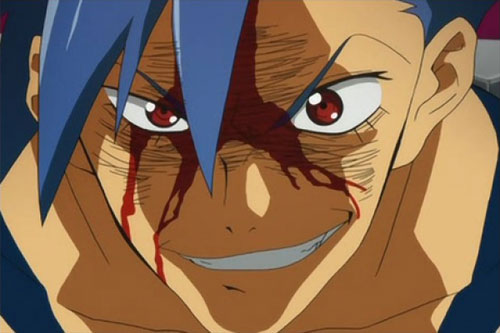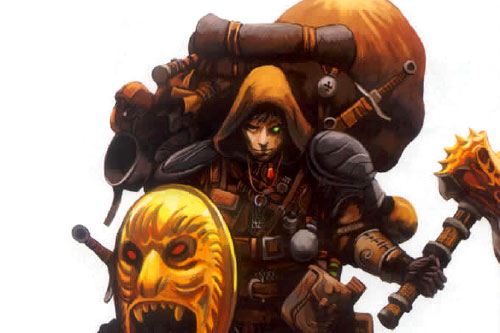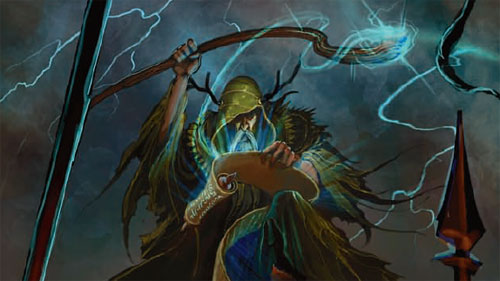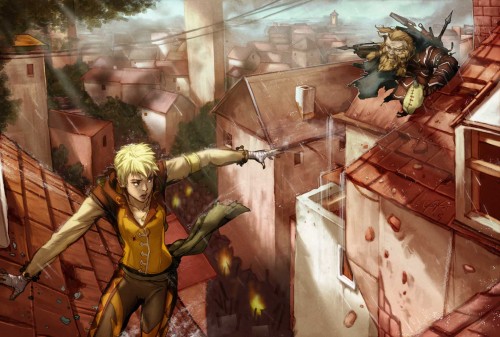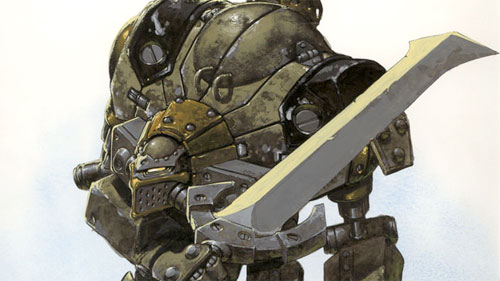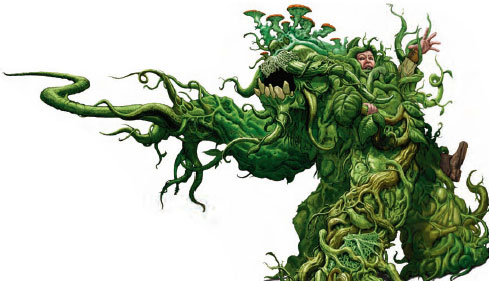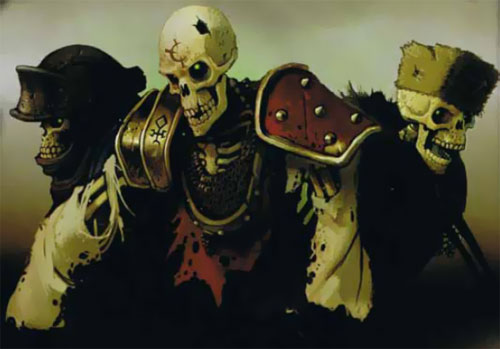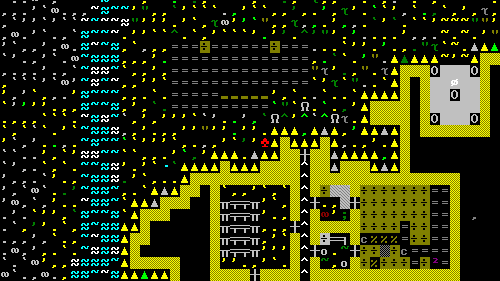
Why the hell aren’t you playing Dwarf Fortress? Seriously. What the hell?
“But there’s a learning curve!” you complain. Use the wiki.
“But what’s with the ASCII art?” you whine. Well, when I was a kid we didn’t have fancy bump-mapping and realistic lighting techniques. Take your ASCII art and like it, or if you just don’t have the stones, try one of the tile sets.
“What the heck is this all about?” you bleat. It’s about mining. And booze. And craftng. And fighting. And beards. And murderous elephants. Good stout-hearted Dwarf stuff.
Dwarf Fortress. What can I say about this wonderful, horrible game? Well, it’s free. That’s an important point.
It’s an economics / strategy simulation game. People have called it a RPG, but that’s because there are Dwarves and the occasional goblin siege, not because there’s any actual role-playing going on. It’s also an adventure game, but I find the fun to lie with building and managing a settlement.
It’s also ugly. Very ugly. That horrible picture atop this post is a screenshot of the first floor of my current project. I understand that some of the weaker-stomached folk out there don’t remember Rogue and NetHack and the eyestrain-inducing splendor of staying up all night playing video games on a green monochrome monitor. Such people are weak. Beneath my consideration, unworthy of even my disdain.
It’s also tremendously deep. Not deep as in “the Dwarves delved too deep and worked the accursed adamantine veins” — though that happens too — but deep as in many-layered, characterized by nuance and complexity. Dwarf Fortress is a wondrous sandbox for you to play in, unconstrained by a set scoring system or victory condition. There’s no wrong way to play Dwarf Fortress, and no right way. You can build your settlement above ground or dig deep into a mountainside. You can erect self-aggrandizing monuments to your own genius or establish a humble community of poor dirt-farmers. You can erect stout defenses and staff them with expertly-trained axedwarves and marksdwarves, or you can take a more pacifistic route. The pacifistic route can result in genocide by goblins, but that doesn’t mean it’s the wrong approach. Just because there’s no right way to play doesn’t mean the game won’t exert some pressure on your bustling little community.
If you can bear with the learning curve for, say, an hour, and you can suspend your desire for 21st-century computer graphics for the duration, Dwarf Fortress is a tremendously rewarding game. Go get it; it’s not even six megabytes, and runs on Windows and Macintosh.
